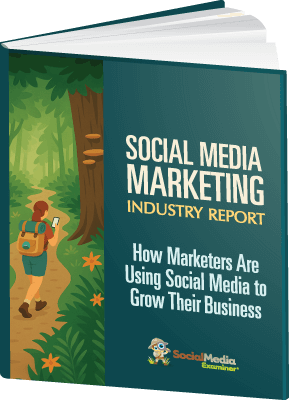Do you run flash sales? Wondering how to promote your flash sale on social media?
In this article, you'll discover how to promote short-term sales with organic posts and paid ads on Instagram and Facebook.
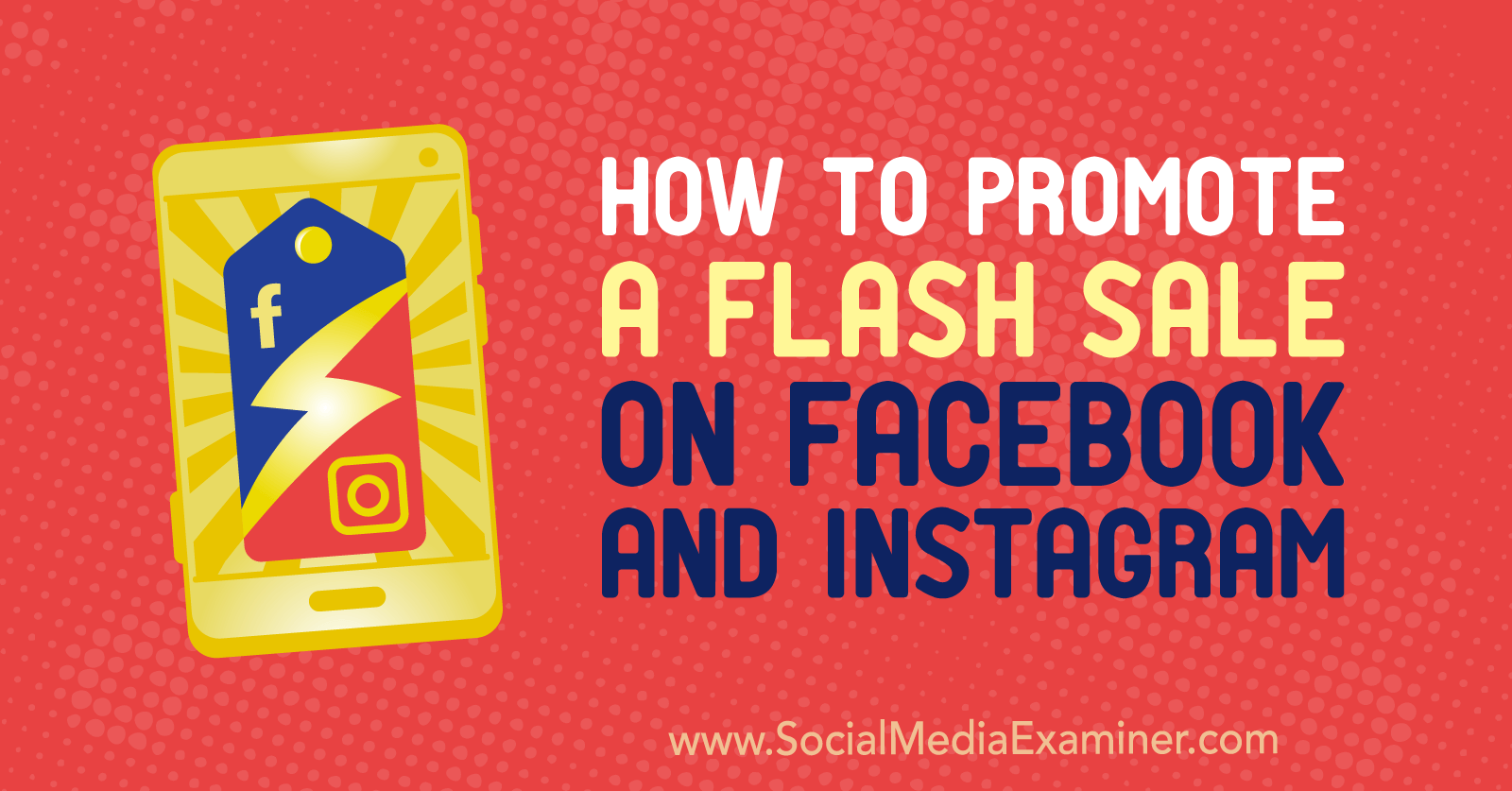
Why You Need a Different Approach for Promoting a Flash Sale
Everyone loves a flash sale. Limited-time offers and short-term sales can be effective ways to inject revenue into your online store, especially around prominent days in the marketing calendar.
Most flash sales last for 24 hours or less; therefore, the campaigns promoting them are also short-lived. Maximizing performance within such narrow timeframes requires a different campaign management approach than for longer campaigns.
Here's how you can maximize your efforts to drive your campaigns further and make your ad spend work harder.
#1: Create a Facebook Event for Your Flash Sale
Creating a Facebook event for your flash sale allows you not only to add all of the important details about the event but also create organic reach by customers marking they're “going” or “interested.”
Additionally, Facebook's algorithm is likely to show your event to people who might be interested as indicated by their social activity, which extends your reach even further.
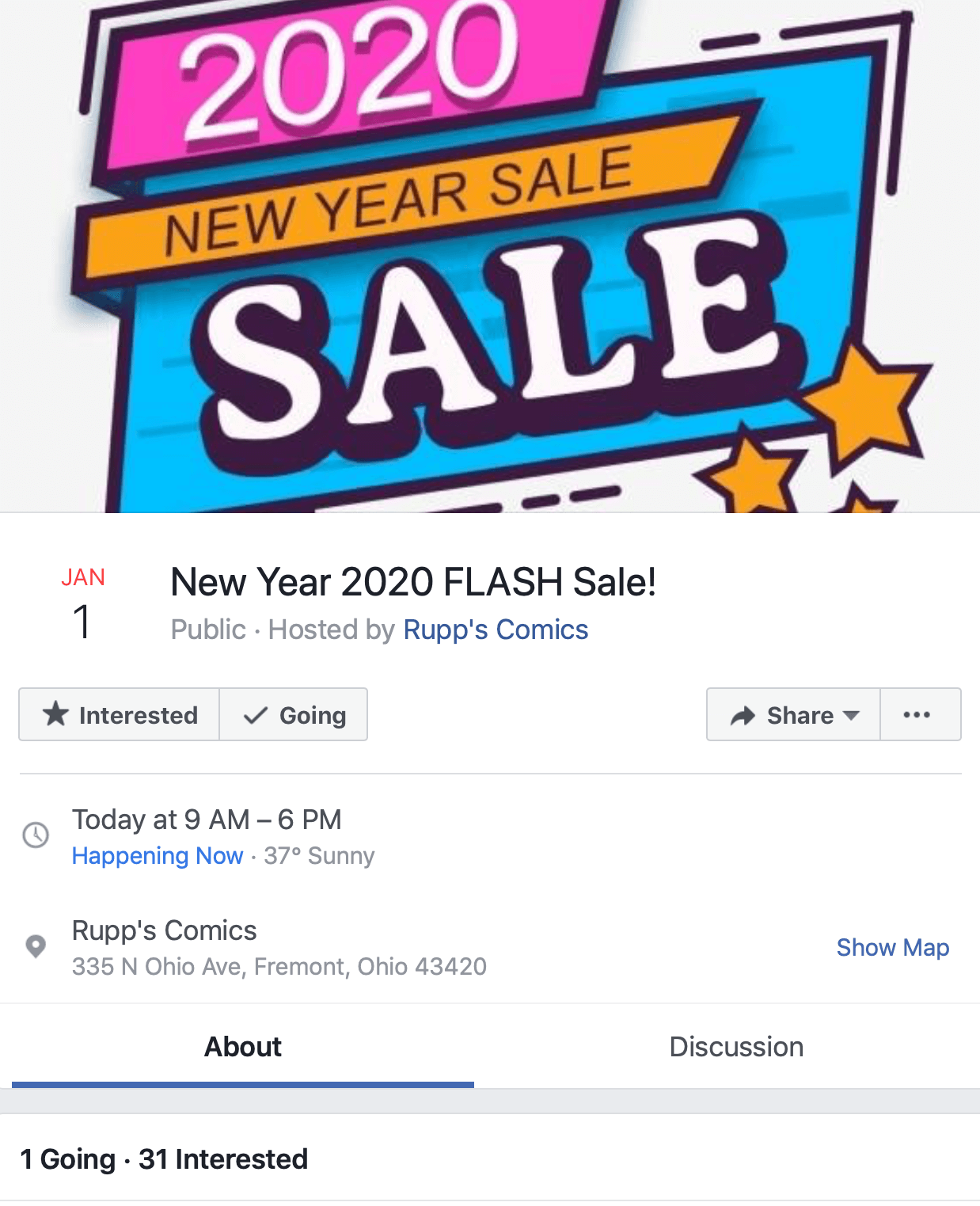
More importantly, people who mark themselves as going or interested will receive a notification about content or updates to the event and a reminder when the event is due to start.
#2: Run a Pre-Launch Reach Campaign With Ads on Instagram and Facebook
Running a promotion announcing your flash sale ensures potential customers will see it. Using paid ads on Facebook and Instagram is vital for building exposure and conversation about your upcoming sale but also prime your Facebook pixel.
Priming your pixel means you're warming up Facebook. If you build engagement and extend your reach before you launch your flash sale, Facebook will know exactly who's ready to buy because of their activity and engagement in the run-up. You'll be building a warm audience you can retarget (as discussed a little later).
In a nutshell, this initial priming—thanks to the pixel—will put your product in front of people who are already interested in the sale. With no extra cost to you, this will reduce CPA (cost per acquisition) and increase your return on ad spend (ROAS). This is a smart application of ad technology.
Here's an example of an announcement ad for a flash sale:
Ready to Supercharge Your Marketing Strategy?
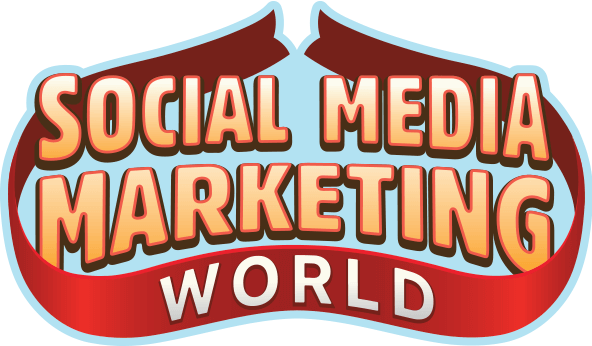
Get expert training and an unbeatable conference experience when you attend Social Media Marketing World—from your friends at Social Media Examiner.
Broaden your reach, skyrocket your engagement, and grow your sales. Become the marketing hero your company or clients need!
🔥 Save $800 on an All-Access ticket. Sale Ends Friday! 🔥
GET THE DETAILS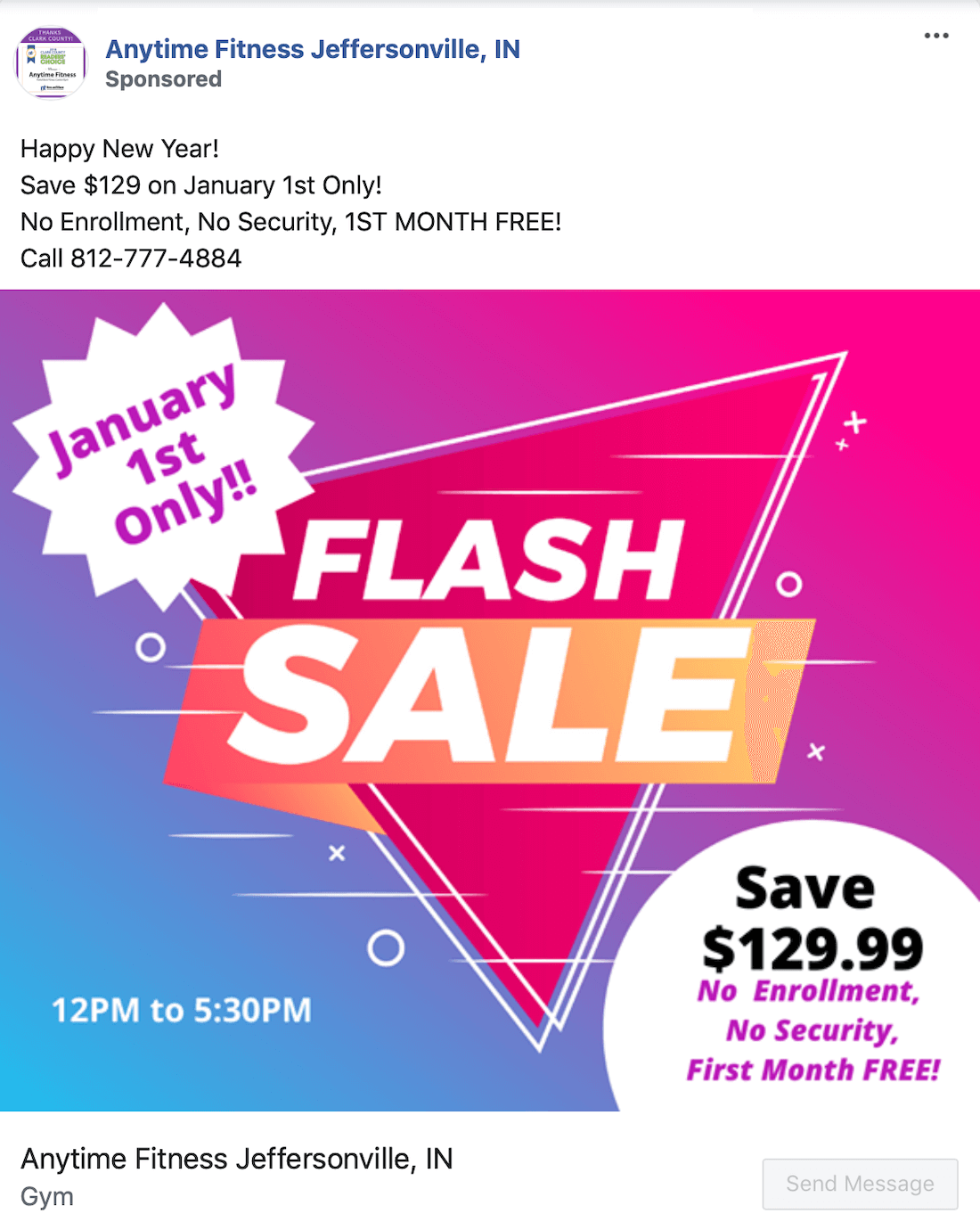
Normally, when setting up Facebook ads for eCommerce, you would choose the Conversions objective because it's likely to achieve the highest ROAS. It's also training your pixel to go after the customer who'll buy from you. In the process, it also allows Facebook to learn about your ideal customer.
This is great for people who are in the buying phase. When you run conversion ads, you're effectively removing a piece of the pie; you're going after quick wins with people who buy. But with flash sales, customers may look a little bit different. They may have thought about buying from you but were waiting for a sale, or needed an added incentive to get them to cross the finish line.
When you're promoting the flash sale in the run-up, you want to set up a Reach campaign. This will let you reach a larger audience and therefore more prospects.
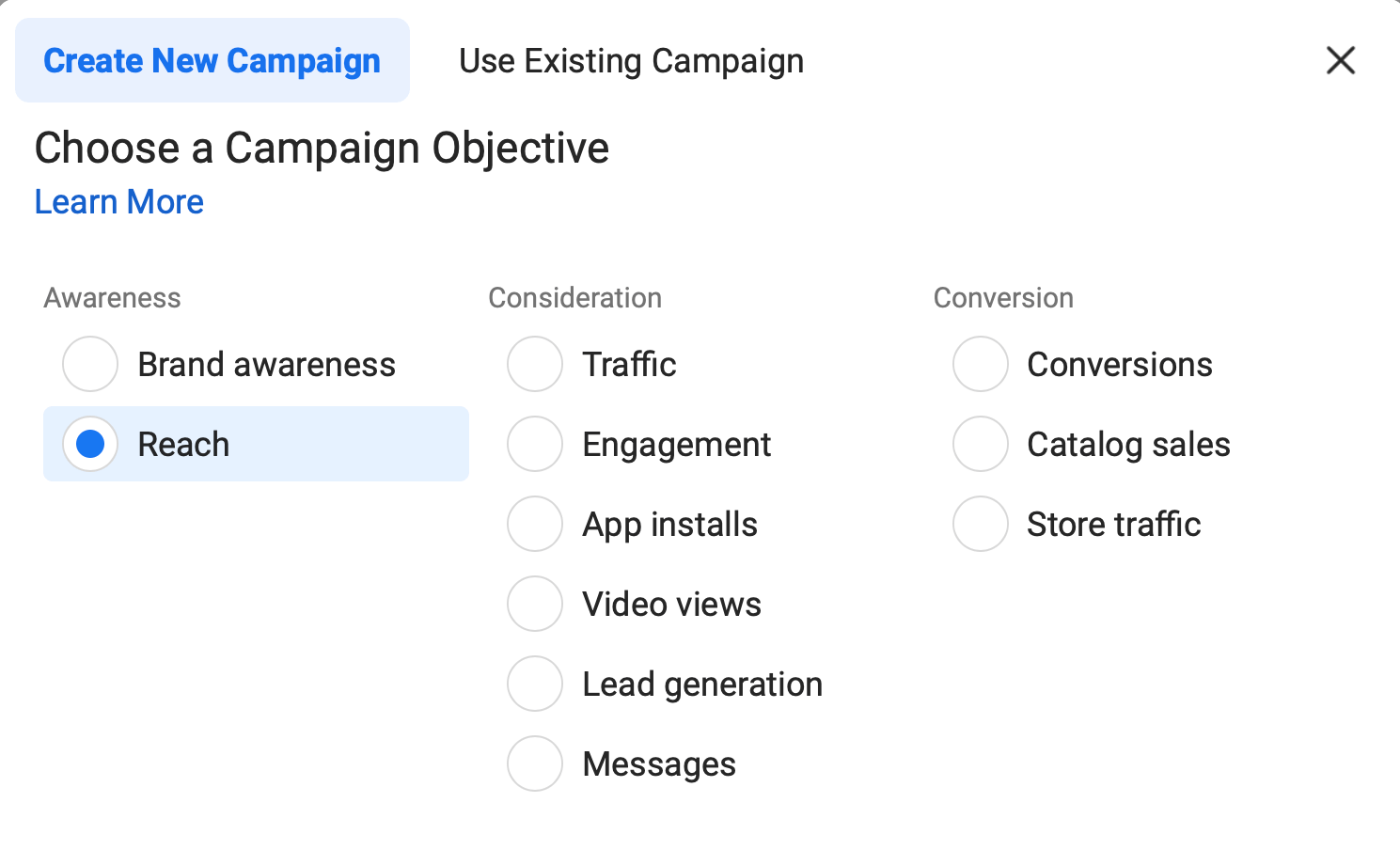
To create this campaign, simply select Reach as your campaign objective. Target your ad to your following or a cold audience that may have similar product interests. To illustrate, if you own a children's clothing store, you can target people who are parents or who have an interest in a similar brand.
#3: Count Down to the Sale With Organic Posts on Facebook and Instagram
About 5–7 days before your flash sale, begin sharing daily countdown posts on Facebook and Instagram. Plan your posts a few weeks in advance to give yourself time to think about how you'll drive organic engagement. It's a good idea to schedule your posts to avoid missing a day.
Create 5–7 posts that clearly call out your sale. Be sure to include the date and how many days there are to go.
When creating these posts, consider using engagement hooks such as “tag a friend who NEEDS to know about this sale,” or “TELL us what you're thinking of buying.” These are quick and easy ways to build your social engagement and organic reach. More importantly, you're building a custom audience of people who have recently engaged with your page, which you can then retarget via your ad campaign on the day of your sale.
In addition to these feed posts, both Facebook stories and Instagram stories can provide more organic exposure. Alongside your countdown posts, share 2–3 daily story posts of your products. Include the flash sale reminder, date, and savings on featured products. Rather than simply sharing the sale discount, you're contextualizing the discount on real products, helping customers visualize their savings.
AI Is No Longer Optional for Marketers—Ready to Master It?
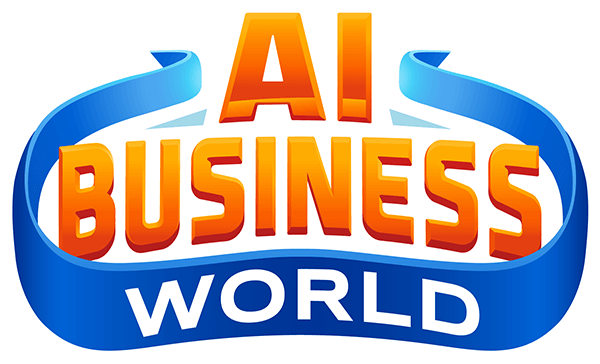
Join over a thousand forward-thinking marketers at AI Business World—a conference-in-a-conference at Social Media Marketing World.
Get two days of practical AI training where you'll discover:
✅ Systems that 3x your output—leaving time for strategy and creativity
✅ Proven strategies you can deploy right away—no guesswork, no wasted budget
Become the indispensable AI expert your company needs.
GET YOUR TICKETS—SAVE $300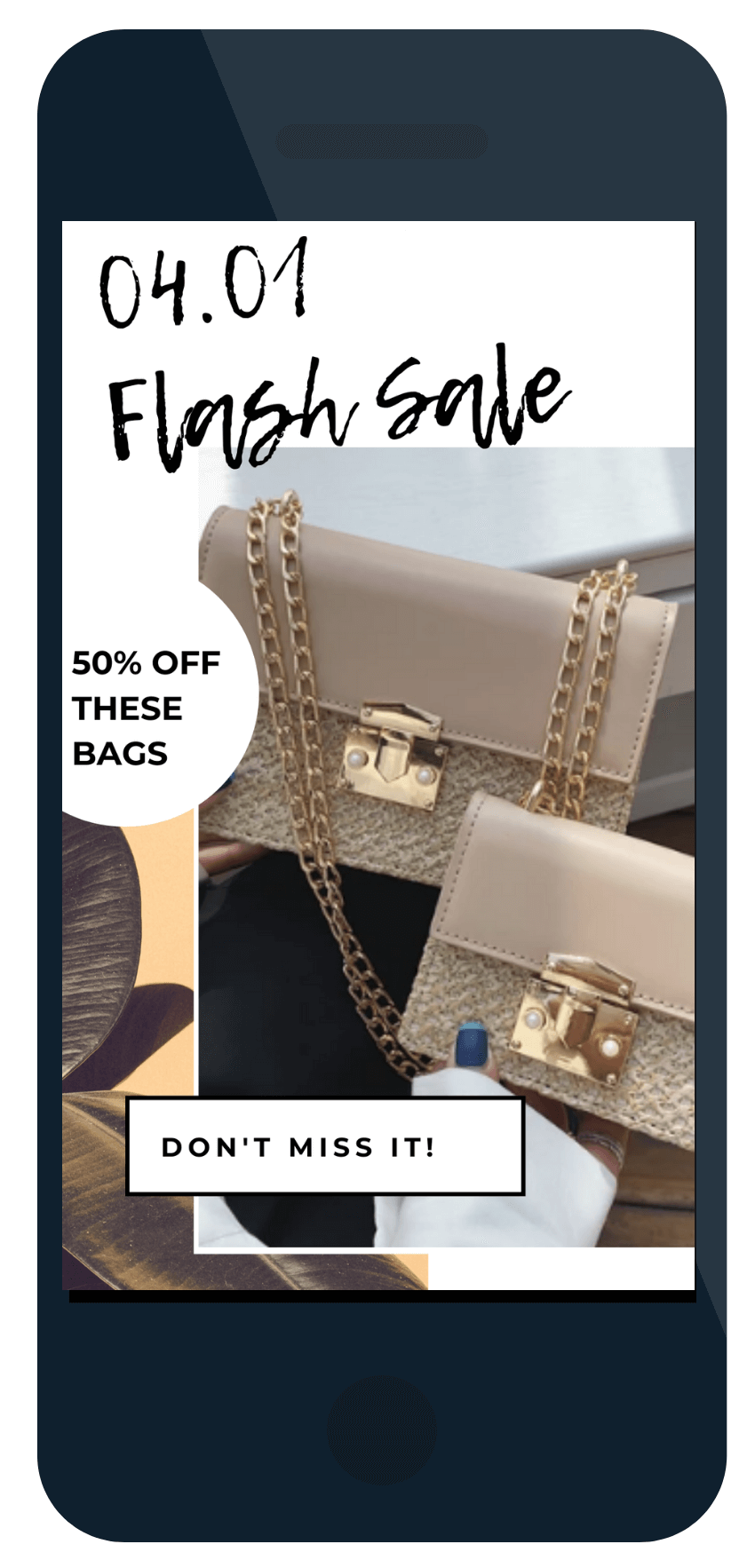
Another way to use the Stories features to promote your flash sale is to share live content of yourself talking about your brand. This can work if you're the face of your brand, or as a way to introduce yourself as the face behind the brand. You could also ask your employees to share their excitement about your sale.
Describe to your audience how this is your biggest sale yet, and how you're excited to offer customers this opportunity to buy the products they've had their eye on for a while. You'll be generating buzz about your sale and connecting with your customers. Giving a sneak peek into who you are and why you're doing this is a fantastic way to build a relationship with audience members.
#4: Run Instagram and Facebook Ads via a Conversions Campaign on the Day of Your Flash Sale
When you're ready to go live with your flash sale, I recommend setting it up as a Conversions campaign. By running a Conversions campaign, you're telling Facebook you want conversions. Don't run your campaign for adds to carts, landing page views, engagement, and so on, because this is what Facebook will deliver.
Set Your Budget
For campaigns that run for less than 24 hours, I recommend using a lifetime budget for the best results. To do this, toggle Campaign Budget Optimization (CBO) on and select Lifetime Budget from the drop-down menu.
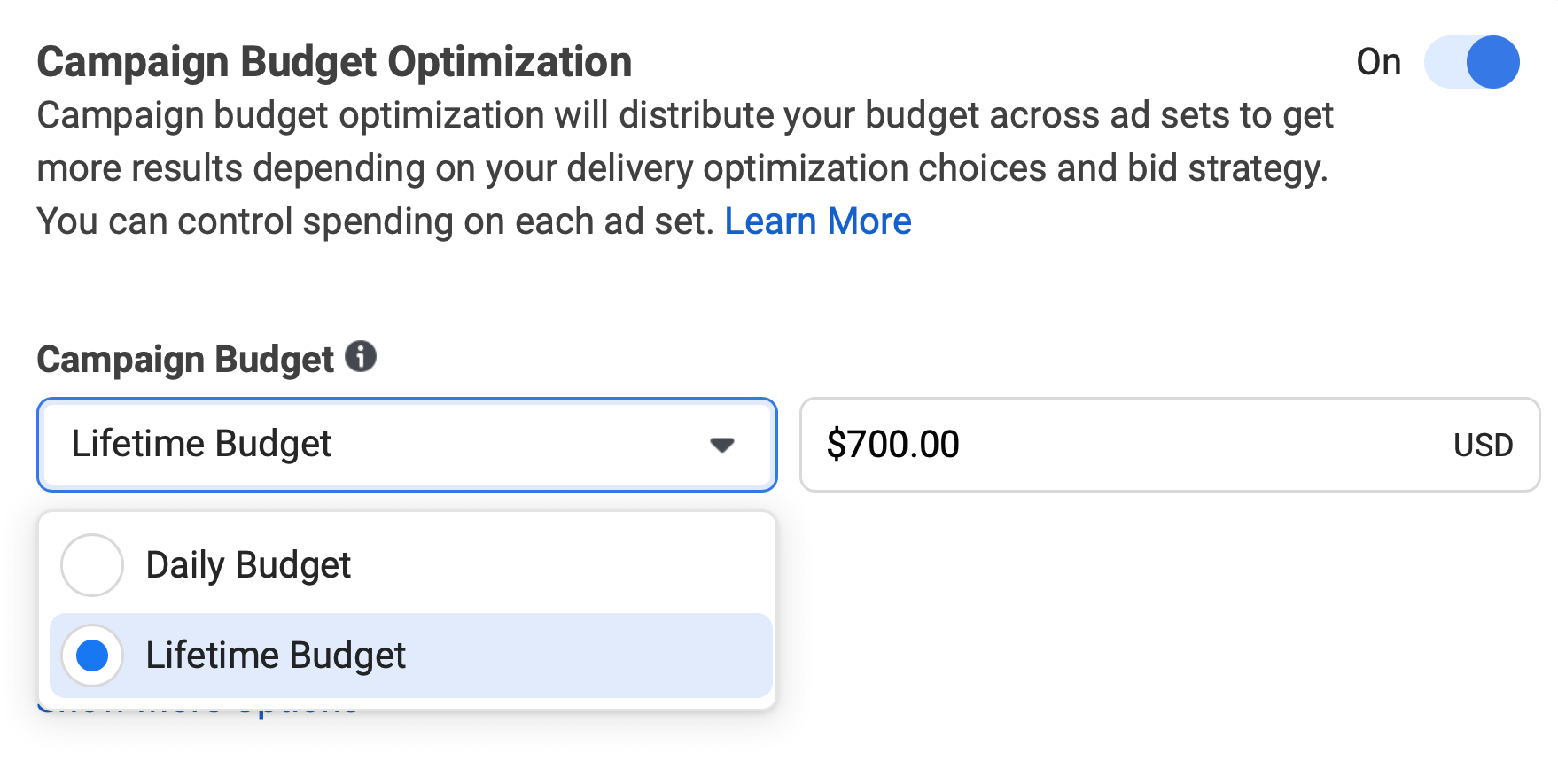
Alternatively, you can edit this in the Budget & Schedule section at the ad set level.
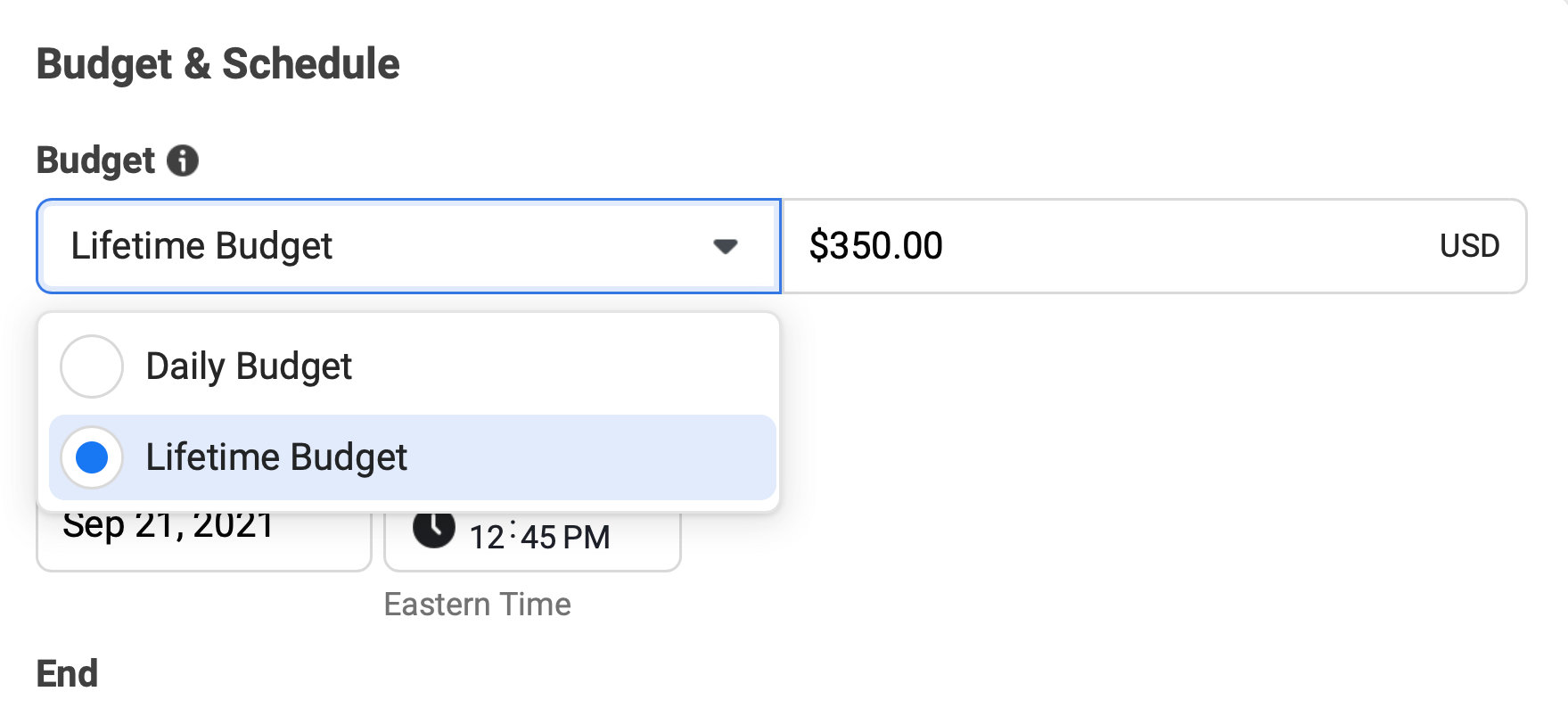
Lifetime Budget is the most sensible setting. If you were to use a daily budget for a 6-hour campaign, Facebook wouldn't spend more than 25% (6 ÷ 24) of the budget you specified so you'd have to take that into account.
More importantly, Facebook's pacing algorithm (which optimizes delivery to get the best results available for your budget) isn't designed to optimize daily budgets for shorter periods.
Target Ads to Your Warm Audiences
Once you've set up your campaign, you can create a number of ad sets to test your audience success rate and measure which audience targeting performed best.
Because you've been running your flash sale warm-up campaign, you can now set up several ad sets targeting different audiences. These should include:
- All website visitors within the last 180 days
- Your customer list
- Everyone who engaged with your Facebook page and Instagram profile in the last 30 days
If you set up your naming conventions correctly (as in the example below), you should instantly be able to see which ad set is performing best.
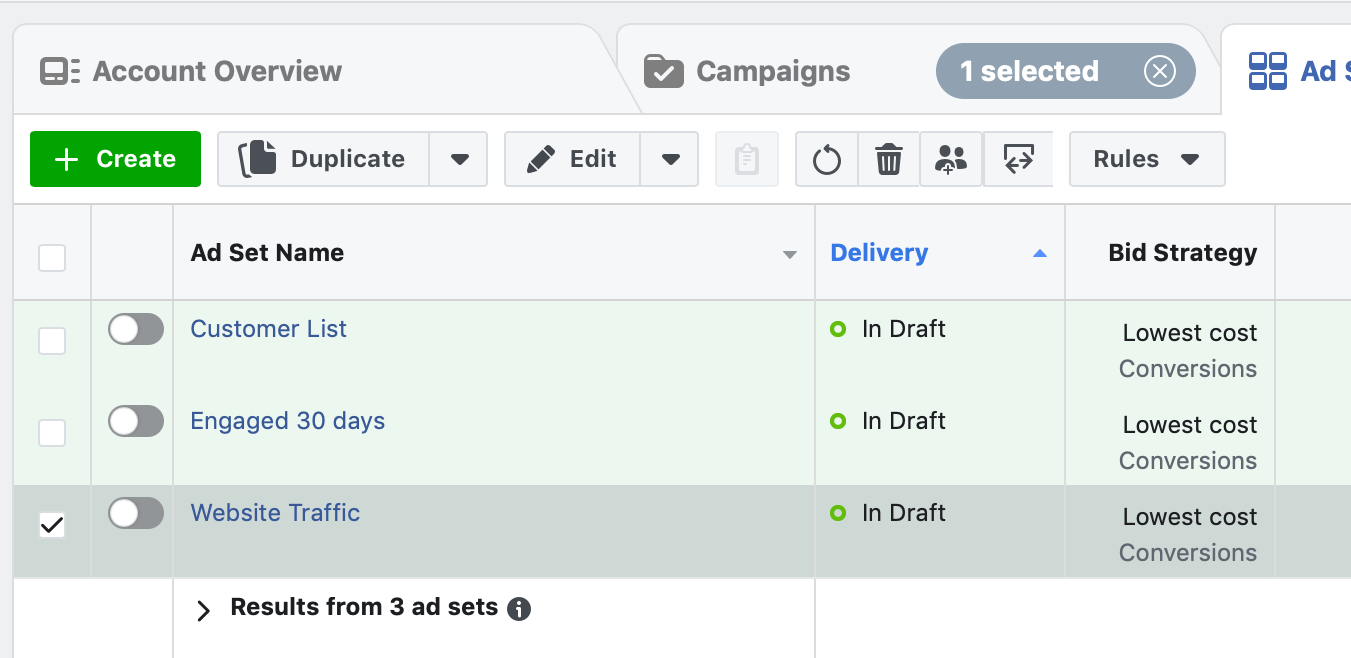
Choose Accelerated Delivery
Keep in mind that Facebook's pacing algorithm can take some time to calibrate itself in the beginning. This clearly isn't ideal if you want your campaign to start with a bang. In this case, use Accelerated Delivery. Selecting this option will disable the pacing algorithm altogether and enter you into as many auctions as possible.
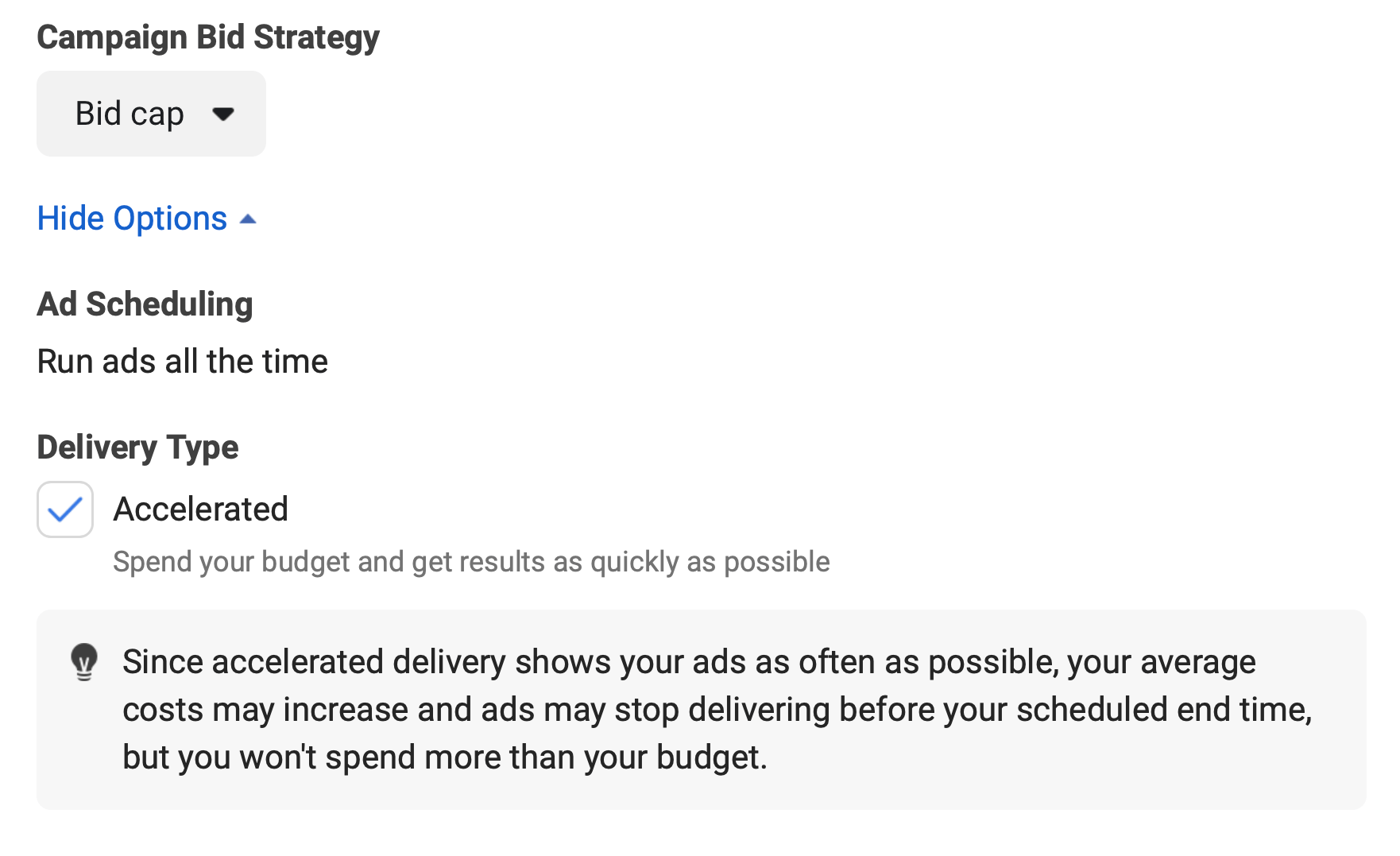
Be careful, though; while this improves delivery and helps to gather data, it can also drive up costs. It might even spend your entire budget before the campaign is over.
You should always have a plan for monitoring results and reacting appropriately in various scenarios.
Conclusion
Some businesses choose to announce flash sales on the day of the sale. On its face, this approach seems to make sense. However, announcing the sale at least 1 week before will give you sufficient time to generate buzz around the offering.
Start by creating an event on Facebook and encouraging your audience to like, share, and comment. Also post organic content through a series of countdown posts and share Facebook and Instagram stories talking about what will be offered in the flash sale and emphasizing that stock levels are limited.
You'll then want to run a pre-launch ad to promote your flash sale to your following or a cold audience that may have similar product interests.
Finally, on the day of the launch, run an ad for the duration of your flash sale using the optimization techniques discussed above.
Remember that your pre-launch efforts will frame your flash sale launch. If you nail the pre-launch, you'll have your customers primed and ready for your sale. This will dramatically increase your conversion rate and you'll see a much higher success rate.
Get More Advice on Selling on Facebook and Instagram
- Set up Facebook Shops to sell your products.
- Create ads specifically designed to sell products and services.
- Sell with Instagram Reels and Stories.

Want to Unlock AI Marketing Breakthroughs?
If you’re like most of us, you are trying to figure out how to use AI in your marketing. Here's the solution: The AI Business Society—from your friends at Social Media Examiner.The AI Business Society is the place to discover how to apply AI in your work. When you join, you'll boost your productivity, unlock your creativity, and make connections with other marketers on a similar journey.
I'M READY TO BECOME AN AI-POWERED MARKETER